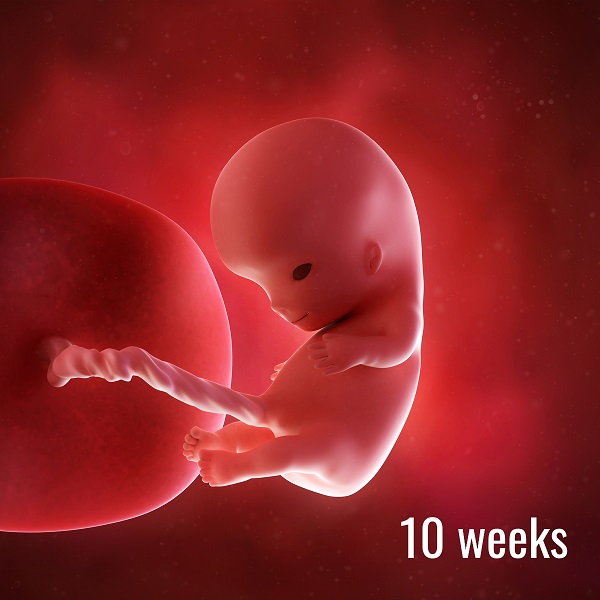Key facts about your baby
- Your baby is now around the size of a prune, or about 3.2cm (1.2 inches), weighing in at around 4 grams.
- Your baby’s jawbones are developing and is home to all the milk teeth your baby will have.
- Your baby’s bones and cartilage are forming and his/her body length is starting to increase rapidly.
- Your baby’s forehead temporarily bulges with his developing brain and sits very high on his head, which measures half the length of his body.
- The genital tubercle (the tissue that forms into your baby’s reproductive organs) becomes recognisable. In a female fetus, the clitoris will appear and in a male fetus, the testes have started producing the hormone testosterone.
- The placenta is now performing most of the job of producing hormones
- The eyes, which were slightly off to the side of the head, have now moved to the front of the face
- Neck muscles are now developed – so your baby can move his or her head back and forth – and the lungs have now begun to form from tubes called bronchioles.
What’s happening with you
- You may experience increase in vaginal discharge which should be clear or white vaginal discharge, which is quite normal. Any discharge which is coloured, smelly or causes itching or soreness could be a sign of a vaginal infection.
- You could find that your skin has now suddenly developed spots.
- You may start to notice weight gain around this time and also experience moodiness
- Softening of the gums – Hormonal changes can cause your gums to swell and become inflamed. It’s believed that this happens in response to any bacteria that may be harboured along the gum line. It’s just another way that your body alerts you to anything that can harm your baby. If you notice your gums are swollen and inflamed, contact your dentist.



